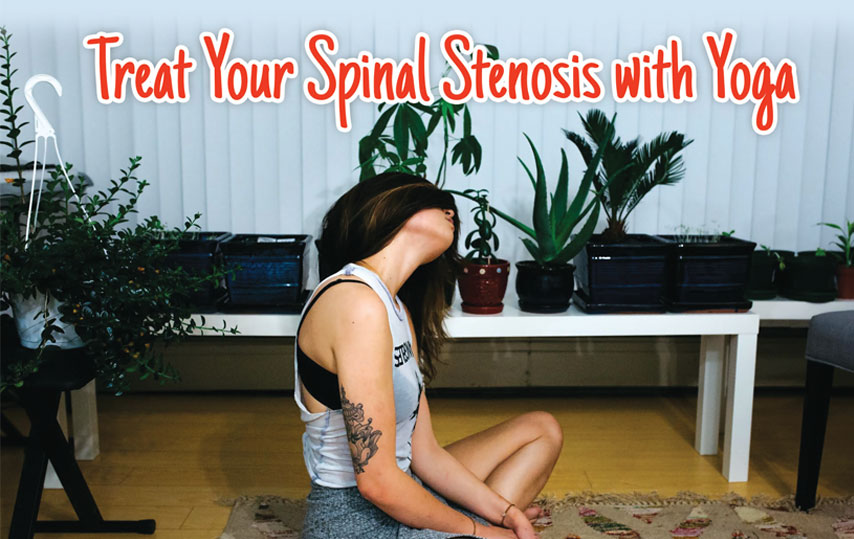Yoga has become popular in the west in recent decades. It makes us stronger, stretches our muscles, soothes chronic pain, promotes mental wellness and encourages us to be more present, which can be hard to do if we lead busy, stress-filled lives.
Two of the most popular styles of yoga in the United States are Vinyasa and Hatha. Vinyasa is a fast-paced form of yoga that teaches individuals to flow through a series of poses synchronizing with their breath. Hatha, a more relaxed form of yoga, focuses on holding poses for longer periods of time allowing individuals to hone in on their breath.
One of the best parts about yoga is that it is available to everyone. It can be practiced anywhere, at any time, without a great need for equipment. People of all ages and abilities can enjoy its benefits and, these days, formal instruction is offered at most gyms.
While the benefits of a regular practice are endless, for those of us experiencing any form of back pain, yoga can mean the difference between consistent pain or discomfort and being able to live every day the way we want to live!
Yoga and the Spine
Four out of five Americans will suffer from back pain at some point in their lives making it one of the most common physical health problems in the United States according to Harvard Health Publications. Some causes of back pain are inevitable such as aging, genetics or injury. However, yoga can help to reduce your risk and relieve pain you may already be experiencing.
Spinal Stenosis is defined as an abnormal narrowing of the spinal canal. When this occurs, nerves in and around the spinal cord become compressed. Common symptoms of spinal stenosis include pain in the back and legs that worsens when standing or exercising. This condition is most commonly associated with old age, but it can be caused by injury, arthritis, poor posture and genetics as well.
Those who practice yoga will find that it helps them correct their posture and increase their range of motion which may result in the reduction of symptoms attributed to spinal stenosis. Even those who have never considered themselves flexible or physically fit can enjoy the benefits of yoga with modifications.
Common yoga poses such as plank pose, downward facing dog and cat/cow pose can help strengthen and soothe lower back muscles leading to a decreased risk of being diagnosed with spinal stenosis, or other similar conditions.
According to a study funded by the National Institutes of Health, yoga helped individuals relieve lower back pain. Those who participated in 90-minute yoga classes twice a week, for two months, and 30-minute sessions every other day, a 29 percent reduction in functional disability and a 42 percent reduction in overall pain.
Poses for the Back
Muscles in our core are essential in maintaining a healthy spine. Regularly strengthening and lengthening these muscles helps reduce or avoid back pain altogether. Regularly practicing yoga and incorporating these beginner poses will improve the way you feel in no time.
Cat/Cow Pose
These poses are usually taught simultaneously in most yoga classes. Alternating between them gives your spine an opportunity to warm up before going into poses that are more challenging. They increase range of motion and flexibility in the neck, shoulders, and most importantly the spine, while releasing tension throughout the back.
Plank Pose
Plank pose focuses on total core, wrist, neck, and back strength. It teaches us to how to align our bodies and stay still for longer periods of time. It is a super introductory pose to add to your beginning practices that will help you build stamina and awareness for more advanced techniques down the road.
When in plank pose, it is important to engage your core by holding your stomach in while avoiding the urge to arch your back. You will also want to be sure that your bottom is not lifted too high in the air.

Downward Facing Dog
When you think of yoga, downward dog may be one of the first poses that comes to mind. It is one of the most commonly practiced yoga poses around. Best known for strengthening the legs and arms, it is also instrumental in opening the chest and lengthening the spine.
With hands firmly planted and the feet following along, this pose uses gravity to reverse the every-day downward pressure on the spine, giving your body the chance to align itself in a new and natural way.
Hold Yourself Accountable
Without consistent, frequent and long-term practice, it may be difficult to feel the benefits of yoga. Visit your local gym or yoga studio to find a weekly time that fits into your schedule. Bonding with others in a yoga class or online community will help you hold yourself accountable and experience all that yoga has to offer your mind, body and spirit.
 Author Bio: Jayson believes there are many solutions to your back pain. Having personally suffered from back pain he has tried them all. He started writing in hope of sharing his experiences with those who are looking for help.
Author Bio: Jayson believes there are many solutions to your back pain. Having personally suffered from back pain he has tried them all. He started writing in hope of sharing his experiences with those who are looking for help.


















 Other
Other